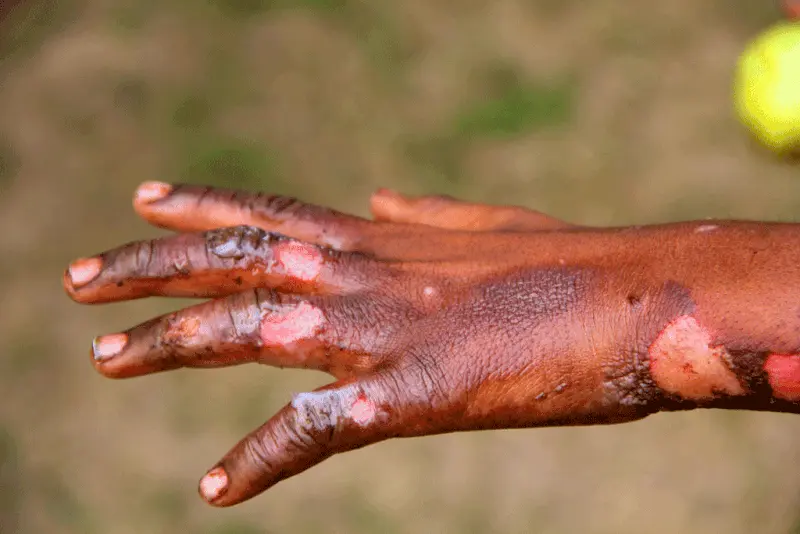Orthodontic Treatment for Sickle Cell Patients

Introduction
Sickle cell disease is a blood disorder that affects millions of people worldwide. Patients with sickle cell disease experience a variety of health problems, including dental and orthodontic issues. In this article, we will explore how orthodontic treatment can benefit sickle cell patients.
What is Sickle Cell Disease?
Sickle cell disease is a genetic disorder that affects the production of hemoglobin, a protein in red blood cells that carries oxygen throughout the body. Instead of being round and flexible, sickle cells are crescent-shaped and stiff, which makes it difficult for them to pass through blood vessels.
Oral Health Issues in Sickle Cell Patients
Sickle cell patients are at a higher risk of developing oral health issues due to their weakened immune system and decreased blood flow to the mouth. Some of the most common oral health issues include:
– Delayed tooth eruption
– Enamel defects
– Gum disease
– Tooth decay
– Malocclusion
Orthodontic Treatment for Sickle Cell Patients
Orthodontic treatment can benefit sickle cell patients in several ways. Here are some of the benefits:
Correcting Malocclusion
Malocclusion is a misalignment of the teeth and jaw that can cause a variety of problems, including difficulty chewing, speaking, and breathing. Sickle cell patients may experience malocclusion due to delayed tooth eruption and other oral health issues. Orthodontic treatment can correct malocclusion and improve the patient’s oral health.
Preventing Tooth Decay
Sickle cell patients are more prone to tooth decay due to decreased saliva production and weakened enamel. Orthodontic treatment can help prevent tooth decay by straightening the teeth and making them easier to clean.
Improving Breathing
Sickle cell patients may experience breathing problems due to malocclusion and other oral health issues. Orthodontic treatment can improve the patient’s breathing by correcting the misalignment of the teeth and jaw.
Enhancing Appearance and Self-Esteem
Orthodontic treatment can also enhance the patient’s appearance and self-esteem by giving them a straighter, more attractive smile.
Risks and Precautions
While orthodontic treatment can be beneficial for sickle cell patients, there are some risks and precautions that need to be taken. Sickle cell patients may be more prone to bleeding and infection during orthodontic treatment, so it is important to choose a dentist or orthodontist who is experienced in treating sickle cell patients.
Orthodontic treatment can be a valuable tool in improving the oral health and overall well-being of sickle cell patients. By correcting malocclusion, preventing tooth decay, improving breathing, and enhancing appearance, orthodontic treatment can help sickle cell patients lead healthier, happier lives.
As we said Sickle cell disease is a genetic blood disorder that affects the shape of red blood cells, making them crescent-shaped instead of round. This can cause blockages in blood vessels, leading to reduced blood flow and oxygen delivery to various parts of the body, including the teeth and gums. As a result, people with sickle cell disease may be at increased risk for certain dental complications, and there are some dental procedures that should be avoided or approached with caution.
- Extractions: People with sickle cell disease may be at increased risk for bleeding and other complications after tooth extractions. Whenever possible, it is best to preserve natural teeth through restorative treatments such as fillings, root canals, or crowns.
- Orthodontic treatment: People with sickle cell disease may have weakened bones and be at increased risk for bone pain, fractures, and osteonecrosis (bone death) with orthodontic treatment. Before starting orthodontic treatment, it is important to discuss the risks and benefits with your dentist or orthodontist.
- Dental implants: Like extractions, dental implant surgery carries a risk of bleeding and other complications that may be more pronounced in people with sickle cell disease. Alternative options such as dental bridges or partial dentures may be more appropriate.
- Periodontal surgery: People with sickle cell disease may be more susceptible to infections and delayed healing after periodontal surgery, which involves removing infected or damaged gum tissue. In some cases, non-surgical treatments such as scaling and root planing may be a safer option.
- Teeth whitening: While teeth whitening is generally considered safe, people with sickle cell disease may be more sensitive to the chemicals used in bleaching agents. It is best to discuss any concerns with your dentist before undergoing teeth whitening treatment.
It is important to note that these recommendations may vary depending on the severity of an individual’s sickle cell disease and other medical conditions. If you have sickle cell disease, be sure to discuss any concerns or questions with your dentist or medical provider before undergoing any dental procedures.
- Nitrous oxide: Nitrous oxide, also known as laughing gas, is a commonly used sedative in dental procedures. However, it can cause a decrease in oxygen delivery to the body, which can be especially risky for people with sickle cell disease who already have compromised blood flow. If nitrous oxide is used, it should be monitored carefully and used in low concentrations.
- High-speed drilling: High-speed dental drills can generate heat and cause vibrations, which can be uncomfortable or even painful for people with sickle cell disease who may have more sensitive teeth and gums. Slower, gentler techniques may be more appropriate.
- Routine cleanings: Regular dental cleanings are an important part of maintaining oral health, but people with sickle cell disease may need to take extra precautions to minimize the risk of bleeding and other complications. It is important to inform your dentist about your medical history and any medications you are taking, including blood thinners.
In general, people with sickle cell disease should receive routine dental care and maintain good oral hygiene to prevent dental problems from occurring. This may include brushing and flossing regularly, eating a healthy diet, and avoiding habits such as smoking that can increase the risk of gum disease and tooth decay. With proper care and precautions, people with sickle cell disease can maintain a healthy smile and overall oral health.
- Local anesthetics: Local anesthesia is commonly used in dental procedures to numb the area being treated. While it is generally safe for people with sickle cell disease, certain anesthetics can have a higher risk of causing allergic reactions or other complications. Your dentist or medical provider may need to use alternative anesthetics or adjust the dosage to minimize these risks.
- Jaw surgery: In some cases, jaw surgery may be necessary to correct bite problems or other issues. However, people with sickle cell disease may be at increased risk for bone pain, fractures, and other complications with this type of surgery. It is important to discuss the risks and benefits with your dentist or oral surgeon before proceeding with jaw surgery.
- Dental emergencies: People with sickle cell disease may be at increased risk for dental emergencies such as toothaches, abscesses, or injuries to the teeth or gums. It is important to seek prompt dental care if you experience any of these symptoms, as untreated dental problems can lead to more serious health complications.
- Pre-operative evaluation: Before undergoing any dental procedure, people with sickle cell disease should receive a thorough medical evaluation to assess their overall health and identify any potential risks or complications. This may involve blood tests, imaging studies, and other diagnostic tests to ensure that the procedure can be performed safely and effectively.
It is important to work closely with your dentist or medical provider to develop a comprehensive dental care plan that takes into account your unique health needs and concerns. With proper care and precautions, people with sickle cell disease can maintain good oral health and enjoy a healthy smile for life.
FAQs
Q. Is orthodontic treatment safe for sickle cell patients?
– Orthodontic treatment can be safe for sickle cell patients if precautions are taken to prevent bleeding and infection.
Q. Can orthodontic treatment cure sickle cell disease?
– No, orthodontic treatment cannot cure sickle cell disease. It can only improve the patient’s oral health and appearance.
Q.. How long does orthodontic treatment take?
– The length of orthodontic treatment varies depending on the patient’s individual needs and the type of treatment they receive.
Q. What are some of the most common orthodontic treatments for sickle cell patients?
– Some of the most common orthodontic treatments for sickle cell patients include braces, clear aligners, and retainers.
Q. How often should sickle cell patients visit their orthodontist?
– Sickle cell patients should visit their orthodontist as often as recommended by their dentist or healthcare






Responses